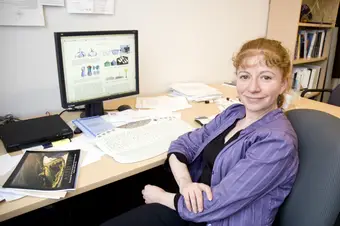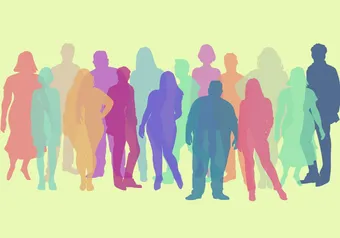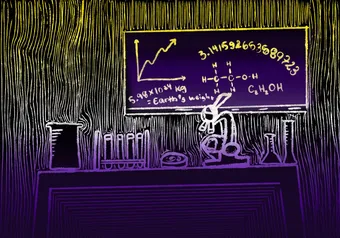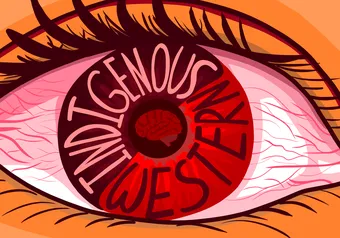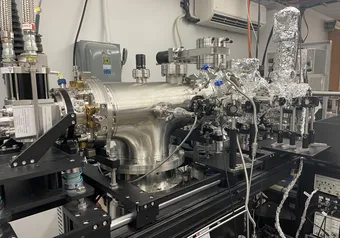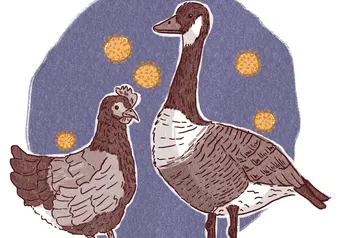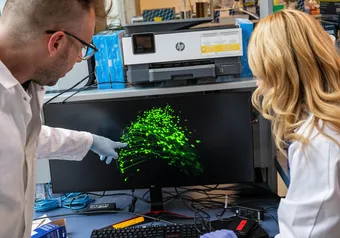Hold an object in your hand. It can be any object: a plastic box, a computer mouse or a bottle of water. Whatever it is that you have in your hand, does it feel familiar? Can you easily identify it? Probably.
Now, try and describe the shape of this object to your roommate without directly naming it. Not so easy, is it?
Language is a powerful medium for communication, but it has its limitations. It is incredibly difficult, if not impossible, to verbally describe geometric shapes. We cannot do this even for simple objects like a computer mouse, let alone describing complex architecture and design.
Interestingly, line sketches are incredibly efficient at representing and communicating geometry. With a few lines and curves in 2D space, one can very easily extrapolate the corresponding 3D features.
FlowRep, a new piece of software developed by UBC’s Dr. Alla Sheffer and her group, can take a complete 3D model and convert it into a compact 2D representation.
“For any physical object, there is a 3D model and a corresponding 2D sketch consisting of lines and curves,” said Sheffer, who is a professor in the department of computer science. “... How do you reduce a complicated 3D model to a compact 2D representation? This is something that artists are particularly good at.”
In fact, some humans are so good at drawing that watching Family Guy, for example, is effortless entertainment instead of an exhausting mental feat, at least for most people. Remember, the cartoon depicts a 3D reality in a 2D picture.
But some credit goes to the viewer of the cartoon, too. You may not notice it, but your brain does an incredible amount of computation to reimagine Family Guy in 3D.
So how does the brain do this? How do we convert simple lines and curves into 3D reality with such ease? And how can we enable computers to do the same? These are precisely the questions that Sheffer is working to answer.
“Extrapolating 3D features from simple lines and curves in the 2D space: this is where our brain excels. If we can figure out the underlying principles by which the brain does this, we can translate it into an algorithm that can then be applied in computation,” said Sheffer.
The output of FlowRep is a simple 2D line representation of a 3D object. It is minimal, but efficiently captures all of the information necessary for the brain to reconstruct and perceive the object in 3D.
[Sorry, video not found. You can contact webmaster@ubyssey.ca to fix the issue]
The brain does this by picking out and making sense of visual cues. These are combinations of lines, curves, and edges. The brain then intricately combines these cues unambiguously based on some basic assumptions.
To build FlowRep, Sheffer’s group conducts research at the intersection of psychology, fine arts, computer science and geometry.
From the field of psychology, the group learns about human abilities, such as evidence that shows that when people see curves, they can immediately figure out what these lines represent in 3D. For example, humans can figure out that an oval shape is actually a circular object seen from a different angle.
By studying the fine arts, especially the principles used by artists, Scheffer’s group can gain a deeper understanding of how the mind perceives 3D shapes. Artists have a track record of discovering many important visual cues used by the brain to decipher 3D objects. Techniques in painting often take advantage of these visual cues in order to present the object in the most vivid fashion.
The applications of this research are endless. Any type of consumer product, from smartphones to automobiles, must first be designed and then manufactured. Modelling softwares are notoriously difficult to use precisely due to the software's inability to convert between 3D and 2D representations.
This process could be greatly eased if an algorithm can reconstruct a 3D model from an artist’s hand sketch. Conversely, if 3D objects can be efficiently converted into 2D lines and curves without an artist’s expertise, the process of producing computerized visualizations and animations could be greatly facilitated.
First online
Share this article


